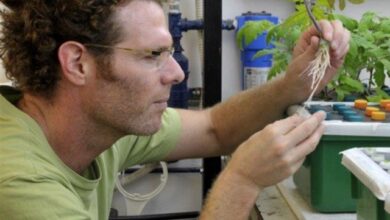What makes water so fundamental to the health of agriculture and the future of sustainability? For starters, it comes down to the supply chain.
We’ve heard quite a bit over the past few months about the disruptions to our global supply chain. It is easy to notice that the delivery speed of our Amazon packages has been affected, as global port congestion and rising freight processes are causing a shortage of goods across industries. However, there is another vital supply chain that is also disrupted; our available supply of fresh water.
Ensuring the health of our watersheds is a top priority
Watersheds, the common outlets that channel rainfall and snowfall to the flow points of all water, are the key to efficient water use. When watersheds aren’t healthy, the entire water supply chain suffers. As global companies increase their efforts to contribute toward sustainability, it’s fair to say that 2022 has the potential to be a watershed moment for watershed management; but this can only happen if we ask ourselves, “What role are we playing in helping our customers to have a positive impact on watershed management?”
It is not enough to simply produce and distribute a useful product. We have an obligation, as fresh water resources become increasingly scarce, to ensure our customers are using water efficiently.
The numbers also support this story. Between 2001 and 2018, 74 percent of natural disasters were water related, and this number is only bound to increase. By 2040, one-quarter of the world’s children will live in areas of extreme high water stress.
In addition, good water management is good business: the economic loss due to the 2012 drought in the United States was $20 billion , the most costly in the country’s history. The next one will cost even more.

Rethinking water management
Collective action is the only way out of this, and businesses must lead the way. As leaders within the water management and water technology spheres, it’s critical that we ensure our customers are increasing their water yields and maintaining that yield properly. We must then look at the entire supply chain to be sure that all of us, at each stage, are ensuring the health of our watersheds. We are only as strong as our weakest links.
To encourage changes in water management, we need to rethink the model of incentives. Carbon credits have been revolutionary in transforming regenerative agriculture. What if water received the same amount of attention as carbon? We would have the potential to offset water use throughout the supply chain. It’s all possible. It simply requires collective action for widespread adoption.
And while conservation is key, water quality is just as important as water quantity. Companies must ask themselves, “Are we doing the best we can, and doing everything we can, to ensure water quality?”
Leading by example with private-public partnership
Today the businesses of the world have a grand opportunity to lead by example. Not only are we role models, but we also understand that we cannot do this alone.
Businesses need to work both with governments and citizens in this battle. The European Union has offered a useful playbook for how regulations and incentives can produce results in the agricultural areas in terms of water supply, greenhouse gasses and climate change. The United States and other developed nations can learn from them, and still have quite a bit of progress to make.
One way in which businesses can help speed things along is through public-private partnerships. Supporting our communities and partnering with them is the proper path to ensuring a safe and reliable water supply for everyone. This partnership involves relationships with sanitation, drinking water sources, farmers, industry thinkers and government leaders.

Water stewardship starts with each one of us
Sometimes big change comes from the smallest steps, too. Community engagement can start at the micro-level. Volunteering, engaging, and educating communities about water management can make massive differences. It doesn’t have to cost billions. In between investing a great deal of time and money and doing something very simple and small, there exist thousands of potential opportunities to improve the water supply.
We need to think about how we use our water efficiently, the earth needs it to survive. Water, like air, is a resource that cannot be hoarded or contained. We all require it to live and we are all touched by the quality and quantity of the supply. To steward our future, we need to steward our water, together, and we need to start now. Tomorrow is not soon enough.
For further information go to: https://www.netafim.com





